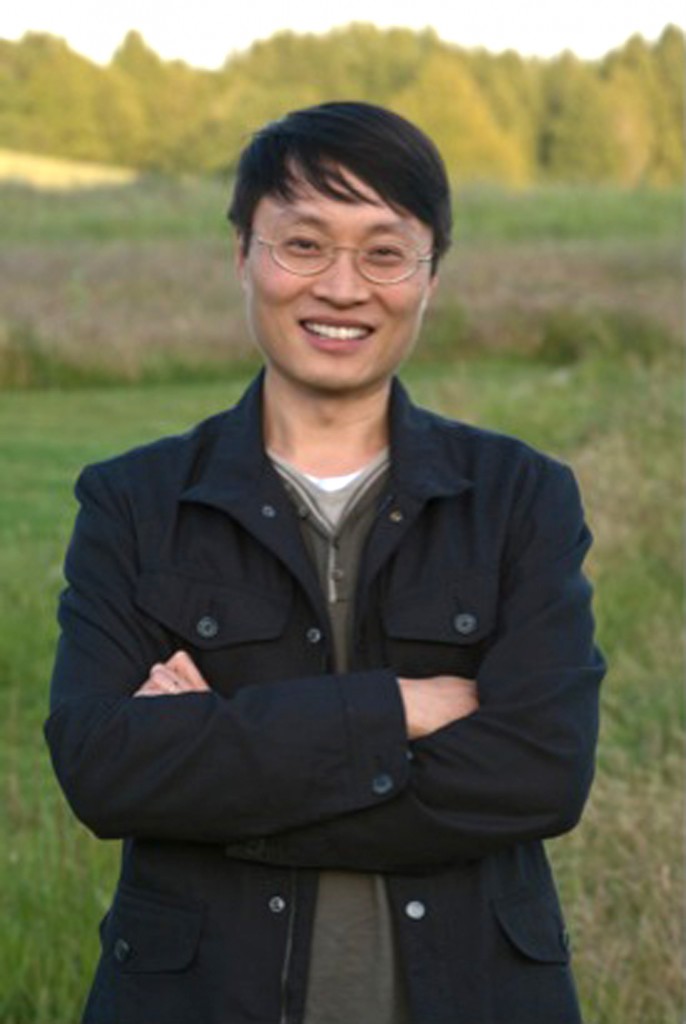Callithumpian Consort delivers memorable program of Lei Liang music
Stephen Drury and the Callithumpian Consort offered a colorful and adventurous program of new and little-known avant-garde gems at the Gardner Museum’s Calderwood Hall Thursday night.
But the star of the evening was Chinese-American composer Lei Liang, whose music dominated the program.
Drury led an ensemble of 16 musicians in a bold and concentrated world premiere of Liang’s Bamboo Lights. A memorial for the composer’s Chinese family members who perished in war, Bamboo Lights is a distant, menacing work. This is music driven by tone color. Liang’s use of screaming woodwind sonorities, sharp blasts from the brass section, the eerie sounds of liquor bottles and brass mutes as flutes, and militaristic timpani strokes–no doubt used to capture, the composer notes, the “howling winds, flickering lights, eyes, shining, gazing, peering through the leaves”–made for an exciting and terrifying listening experience.
The Callithumpian Consort opened the concert with Aural Hypothesis, a searching work for flute, clarinet, violin, cello, piano, and vibraphone. Liang notes that the piece is “a quasi-fantastical study on how lines may find expression in sound.” And expression manifests in the music’s unusual timbres, including glissandi harmonics on cello and violin, a clarinet mouthpiece played by itself, and piano strings plucked and even snapped with a taut rubber band.
Aural Hypothesis, like Bamboo Lights, is an exploration of wide-ranging tone color. Whistling and breathy notes in the woodwinds and strings are paired with edgy double tones in the bass clarinet. But there are moments of thicker, grating texture, where clamorous piano chords rip through the middle of sparsely scored winds and strings that are stretched into extreme registers.
Drury and the full ensemble also rendered Liang’s Brush-Stroke with particular energy and polish. Another panorama of orchestral color, Brush-Stroke captures in sound the composer’s interest in Chinese calligraphy scripts. Some of the musical lines are smooth and slender, others sharp and jagged. Here too, Liang explores his concept of “one-note polyphony,” where single notes, he says, “function as intersections that expand into other musical dimensions.”
Brush-Stroke contains some tonal elements in its broader pan-tonal palette. The oboe and flute trade wide-leaping motives with xylophone and vibraphone–percussionists John Andress and Nick Tolle drew bows across the bars–which fuse together to form shimmering chords that are left to decay in distant echoes. Pianist Yukiko Takagi added to the effect by lightly dropping a string of foam peanuts onto the open strings and plucking with expressive vibrato the strings of a lidless piano, a sound that resembles a Chinese guqin. Liang builds the sonority into a brazen climax, where Andress and Tolle performed and vocalized in onomatopoeia brash syncopated rhythms on tom toms. The consort winds answered with rapid-fire passage work before the music came to an abrupt, heart-stopping conclusion.
Between the Liang pieces, Callithumpian musicians performed additional probing and colorful works.
The most introspective of those was Luigi Nono’s Omaggio a György Kurtág, which the musicians performed with impressive sensitivity. Set for an unusual ensemble of flute, clarinet, tuba, and live electronics, this little-known Nono composition is a hushed but sprawling exploration of Schoenbergian Klangfarbenmelodie (tone color melody). Flutist Sarah Brady and clarinetist Rane Moore meshed long flutter-tongue and breath-tone pitches with double tones from Beth McDonald’s distant and airy tuba sound. Contralto Thee Lobo, with her pure, earthy voice, fit comfortably into the sonority. John Mallia, set up with laptop and mixer in a corner of the floor, recorded and played back the slightly altered sounds, which pulsed gently in surround sound.
Yukiko Takagi offered a definitive reading of the only solo work of the evening, Xiaoyong Chen’s Diary II. This brief work, which placed Takagi behind the keyboard, is a quasi-impressionistic affair cast in expanded modal and atonal harmony. “Crossings,” the first movement, comprises simultaneous running lines that coalesce in a shimmer of sound that freezes in place and left to decay, an approach found in the music of Giancinto Scelsi. “Floating Point,” the second of the two movements, features repeated, descending chromatic and whole-tone phrases that, as the music progresses, splash with dissonances and syncopated cross rhythms. Takagi played throughout with gusto and a convincing sharp touch.
It is rare to hear performances of such challenging repertoire rendered with such loving care. That is in large part due to Drury, whose steady hand guided the Callithumpian musicians in fine performances of works that will not easily fade from memory.
The Chamber Music Society of Lincoln Center will perform music by Mozart, Milhaud, Poulenc, and Ligeti at Calderwood Hall 1:30 p.m. Sunday. The next Avant Gardner concert will feature the International Contemporary Ensemble in a Sofia Gubaidulina program, 7 p.m. March 21.
Posted in Performances
